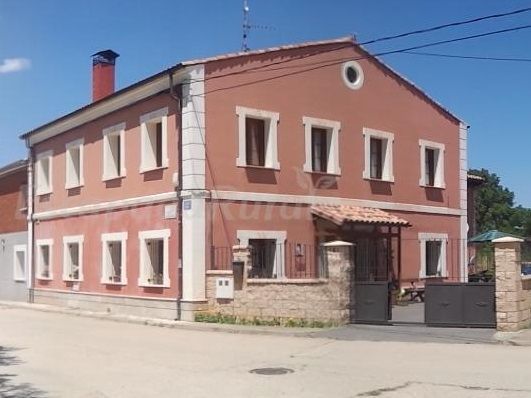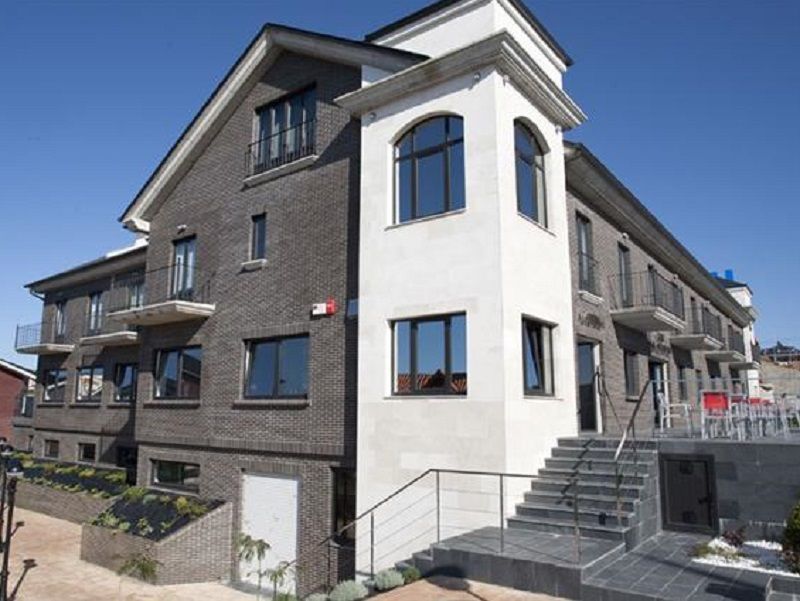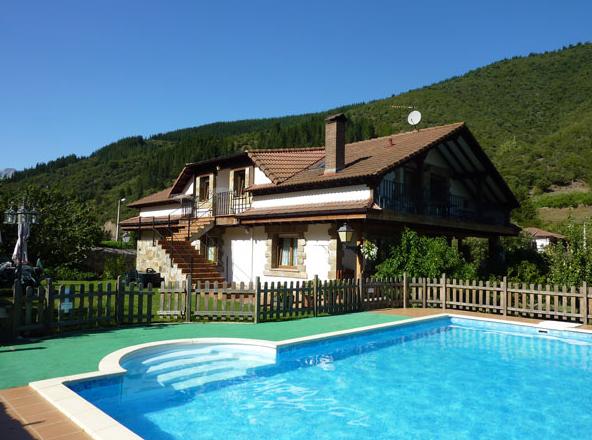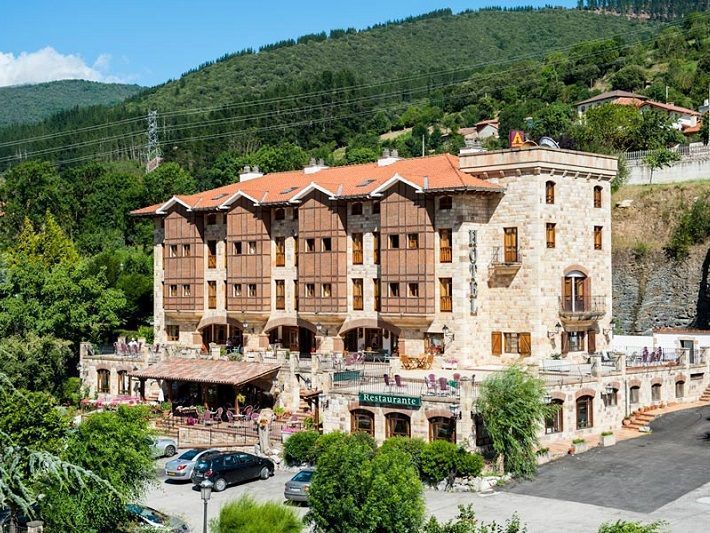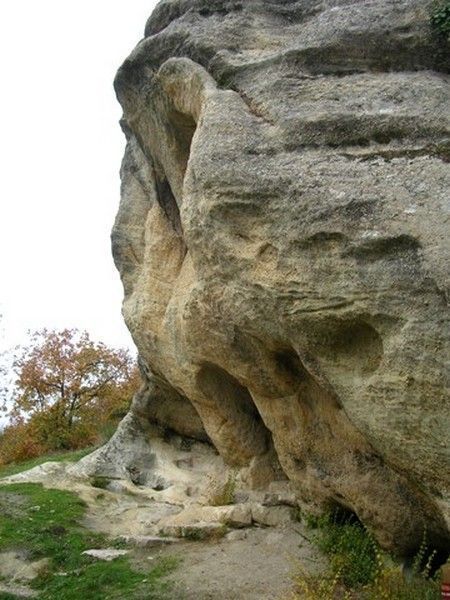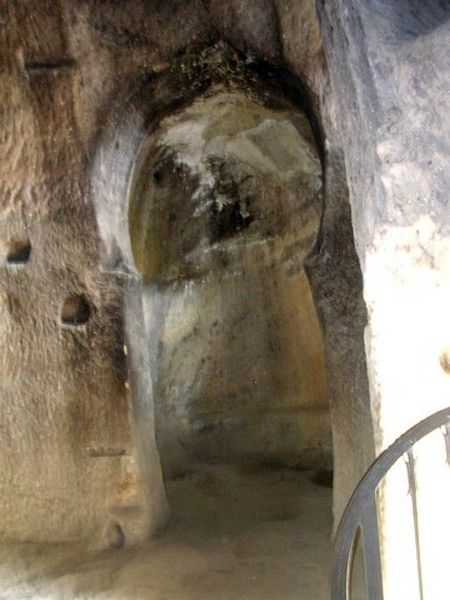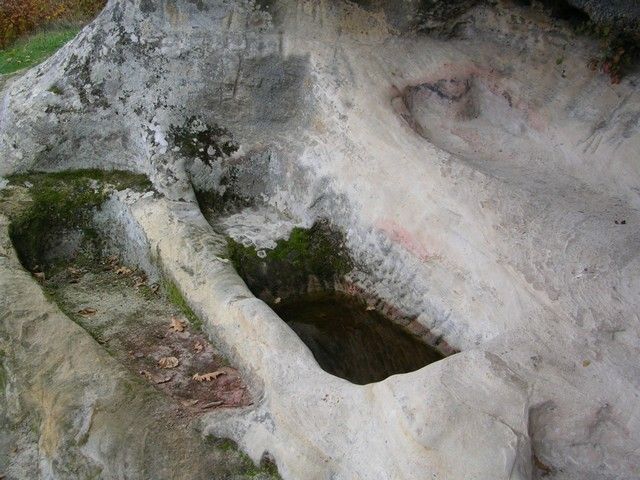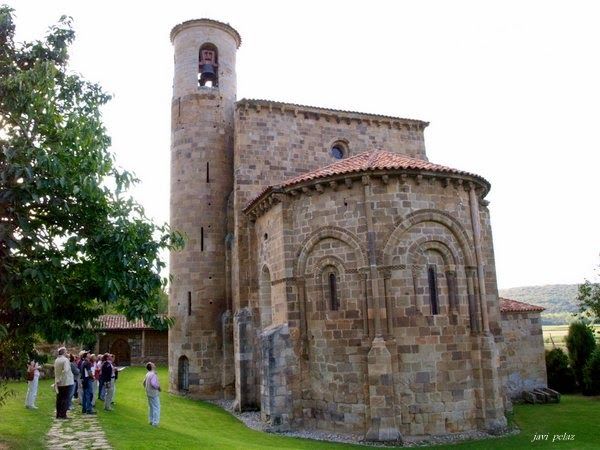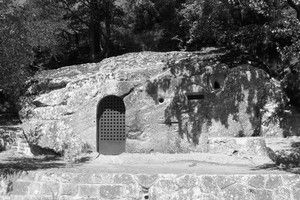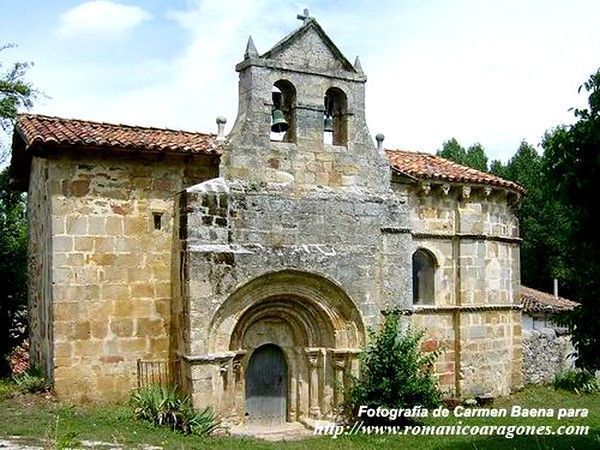ERMITA DE ARROYUELOS

Thanks: The file of this Mozarabic hermitage has been developed with the collaboration of our contributor Diego Alonso, who, after visiting it has provided us with the information and photographs herein used .
Previous notes
- Two storey church excavated on a large sandstone block, with the remains of a headstone and a necropolis with High Medieval graves outside. Declared Heritage of Cultural Interest in 1985.
- The village of Arroyuelos is higher up and dominates the meadow of the river Ebro that grants a great agricultural potential to the lands of the area.
Historic environment
The abundance of hermitages draws attention in the valley of Valderredible and, among the variety of forms we find, in only two cases there are two storey churches. Arroyuelos and St. Miguel de Presillas count with two storeys, although their structure is a very different one. But the simple fact of having two storeys is the clue that some kind of monastic life took place in them. In these two cases we can be certain of that, as the upper part could have been used as a cell or a warehouse, or even the choir.
Dated between the 8th and 10th centuries, taking as a reference the graves outside and the fact that in this period coexist Hispanic-Gothic artistic forms with solutions from Asturian and Repopulation.
Description
 apse at its feet without defined shapes. In the nave's body there is a large prismatic pillar with papyrus shaped arch ribs in its cover, what have made scholars establish a link with St. Baudelio de Berlanga in Soria. The central space produces the sensation of a square living space for the the pillar's volume that is not in the exact centre.
apse at its feet without defined shapes. In the nave's body there is a large prismatic pillar with papyrus shaped arch ribs in its cover, what have made scholars establish a link with St. Baudelio de Berlanga in Soria. The central space produces the sensation of a square living space for the the pillar's volume that is not in the exact centre. The pillar is connected to the wall that faces the entrance door by a low wall which purpose probably was to delimit the presbyterium.We do not find that barrier on the other side, maybe because the division was made with curtains as the notches on the pillar would so indicate. Almost the whole perimeter of the body has a wooden bench. The rock is one metre thick in the wall that faces out and serves as a platform to part of the upper storey. The access is through a staircase placed at the feet of the church. In this space a quadrangular rounded plan is insinuated upon a step. The other living space on the top is in an imaginary segment next to the feet and it could have been used as a warehouse.
There are several outlog holes at a
 medium height of the wall at the same level of the top spaces, what suggests the existence of a double floor, maybe for cells. The triumphal arch is a horseshoe one and very slender, what gives the ensemble a very elegant and graceful air. The apse is covered with a semi-dome vault. The area is very dark as the light only comes from the door and a small window opened on the wall of the platform, that blocks with masonry work a great quasi circular opening in the rock. At the entrance of the church there are burials excavated in the rock that have been transformed to be used as a drinking troughs; graves that set a chronological reference around the 10th century, since burials inside the church were authorized after that time.This is easy to understand if we bear in mind that the consolidations of the Catholic church as of the 11th century may be noticed with the increase in their income; for example, the donation of a property in return to the right to be buried in a holy place. A church with more power and control over the diocesis equals higher revenue and also the increase of the legal problems generated by the lack of documentation.
medium height of the wall at the same level of the top spaces, what suggests the existence of a double floor, maybe for cells. The triumphal arch is a horseshoe one and very slender, what gives the ensemble a very elegant and graceful air. The apse is covered with a semi-dome vault. The area is very dark as the light only comes from the door and a small window opened on the wall of the platform, that blocks with masonry work a great quasi circular opening in the rock. At the entrance of the church there are burials excavated in the rock that have been transformed to be used as a drinking troughs; graves that set a chronological reference around the 10th century, since burials inside the church were authorized after that time.This is easy to understand if we bear in mind that the consolidations of the Catholic church as of the 11th century may be noticed with the increase in their income; for example, the donation of a property in return to the right to be buried in a holy place. A church with more power and control over the diocesis equals higher revenue and also the increase of the legal problems generated by the lack of documentation. Other interesting information
Access: The hermitage of Arroyuelos lies in the village of Arroyuelos, in the Valderredible valley, a few kilometres from Orbaneja del Castillo, on the road that connects this village with Aguilar de Campoo. Go up the village and take a street to the left; at the end of it a path arises that leads to the hermitage. Before getting there, in the last inhabited house lives the neighbour that holds the key. GPS coordinates N-42º50'31'' W-3º51'37''
Bibliography
Portals
Cuadernos de Campo. Las Iglesias Rupestres en Valderredible.
Ermita rupestre de San Acisclo y Santa Vitoria de Arroyuelos







